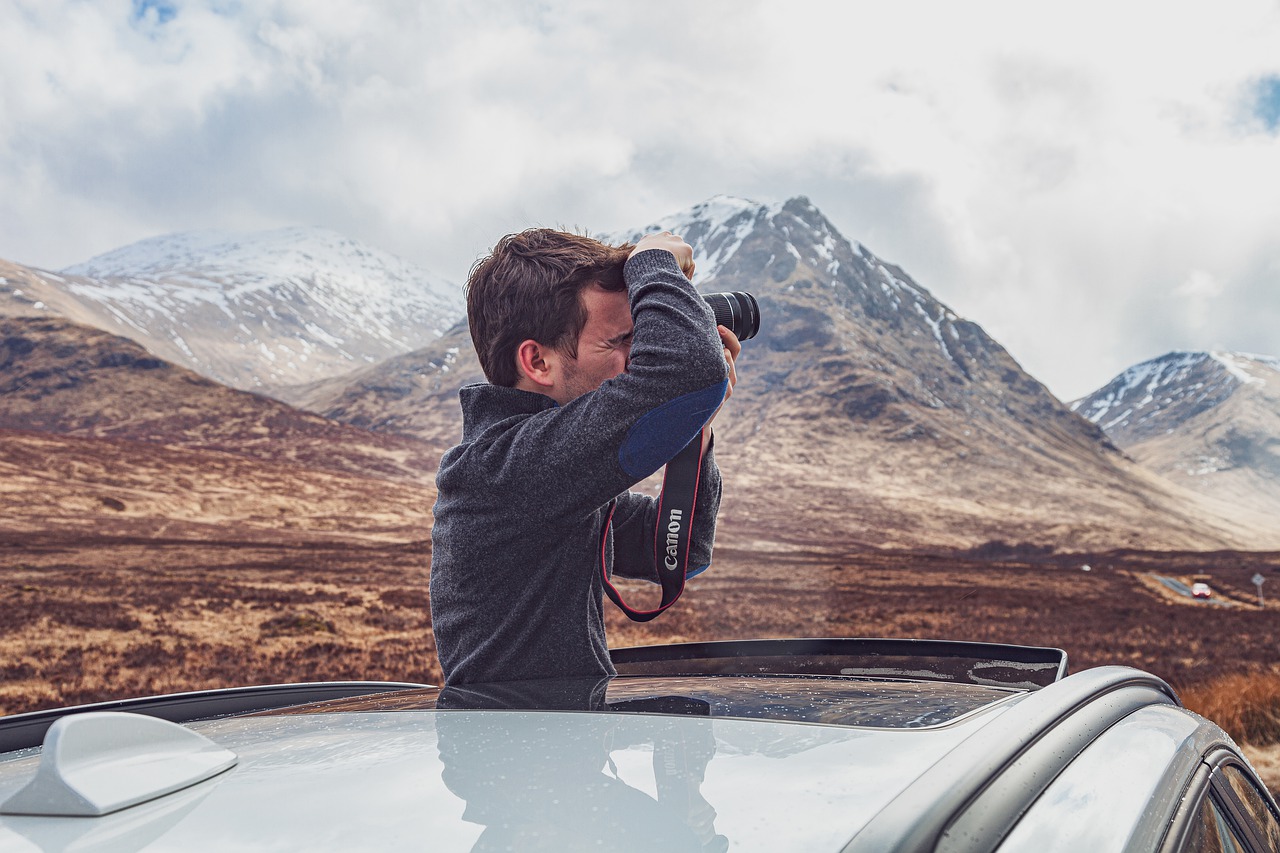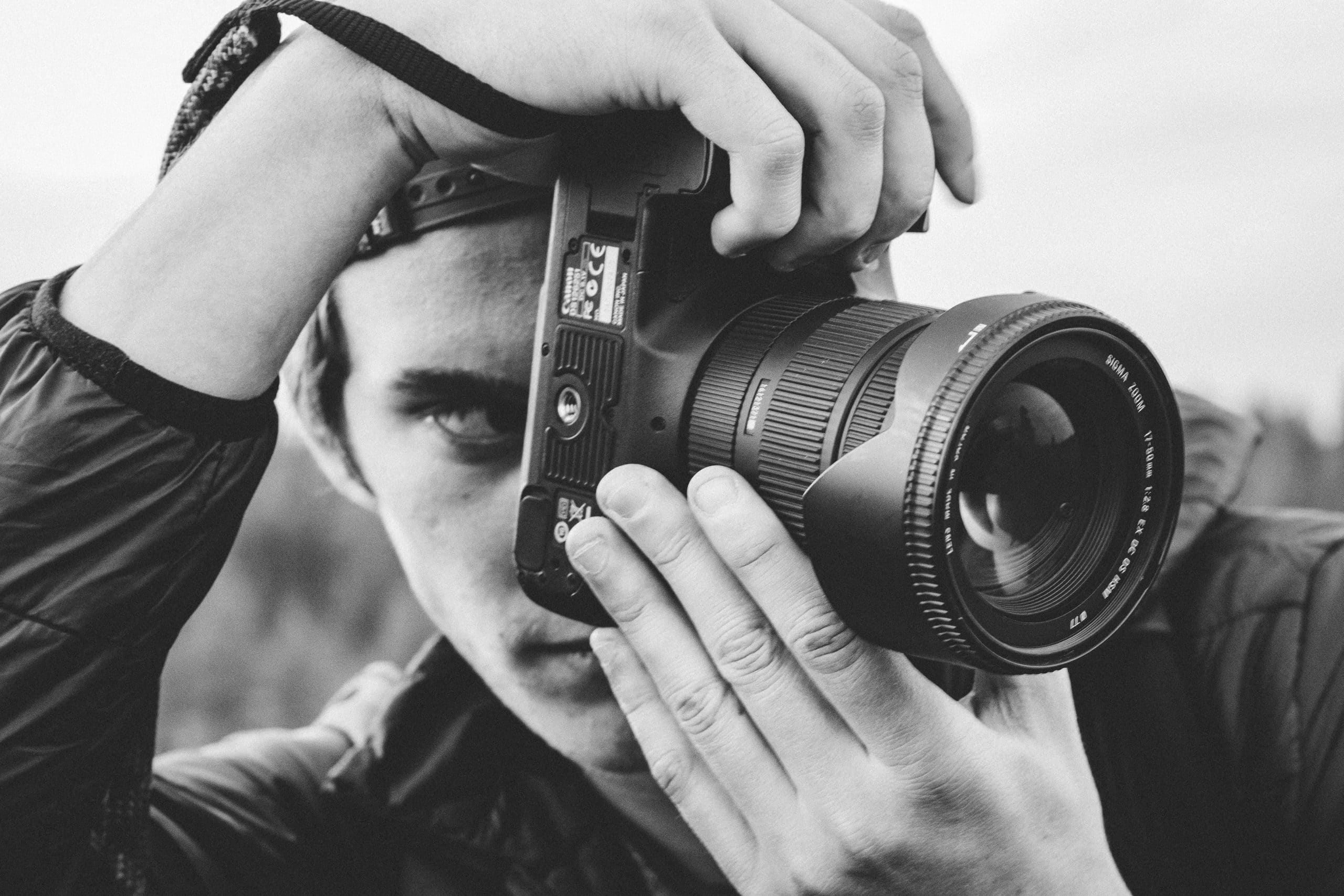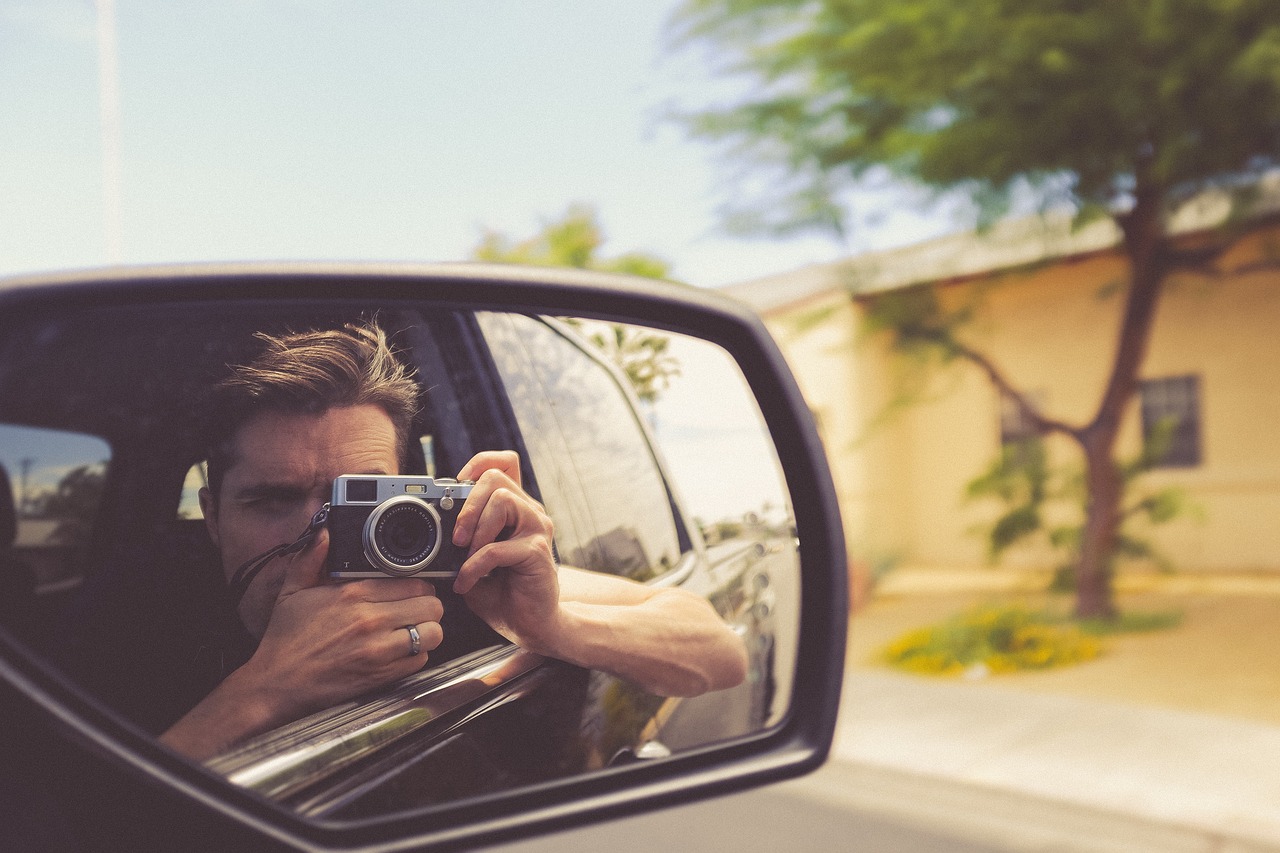Photographing landscapes is usually best done on a trip. Whether you go overseas or explore your home country, you will be able to find new and exciting destinations and vistas that you have never seen before.
A road trip is an even better chance to grab some new scenes. You will cover far more distance, which means opportunities abound. But when you’re on a tight schedule, there isn’t always time to capture all of the shots that you want by getting out of the vehicle and setting up the camera.
Instead, you may have to take shots while the vehicle is still moving. Here are some tips that you can use in order to get the best possible shots.

Image by Dimitri Houtteman from Pixabay
Use a fast shutter speed
This is step number one, and it almost goes without saying. Unless you want motion blur in your images to indicate that you were moving when you took them, which is a whole other thing, then you will want to freeze the landscape and capture it still. In essence, you want to make it as if you were standing still with your camera on a tripod when you took the shot.
This means grabbing the image as quickly as possible. You want as little light as possible to pass through the lens so that there isn’t enough time for the scene to become blurred. Of course, depending on the lighting conditions, this may be difficult. You can raise your ISO to compensate – and there’s always asking the driver to slow down just a little.
You may have to experiment in order to get the settings right – but do this regularly as you travel to check that you have the right set-up based on changing weather conditions and scenery. You never know when you’ll spot a view that you have to capture fast, before it’s gone.
Keep your eyes open
You must keep looking around you with your photographer’s eye firmly turned on if you want to get good results here. While you roll forward, the landscape around you can change quickly. You might also be affected by other vehicles and blockages such as road signs that might obscure your view.
It will probably happen more than once that you see a great shot, raise your camera, and realise you’ve missed that millisecond of opportunity. To avoid it happening even more frequently, be ready at all times. Have the camera switched on, lens cap off, and in your hands ready to go. This can be tiring over the course of a long drive, but the payoff is worth it!

Photo by Greysen Johnson | Unsplash License
Lower the window
You will want to get the window out of the way if you are going to capture a good shot – reflections, dirt and insects, and so on make for poor companions to your lens. Lower it out of the way – if you’re in a windy or otherwise unseasonable location, this may cause some sacrifice to your personal comfort, but ask yourself if it is worth it.
If you can’t lower the window – for example, if it’s jammed or you are on a train – then you can try to minimise the effects of what we have described. Make sure that your focal point is set manually so that you can focus past anything on the window and onto the landscape. Hopefully, this will blur out any marks on the glass (or at least enough so that you can Photoshop them out later).
You will want the weather to be mild with soft light to make this worth, as strong sunshine will make it a hell for reflections. You don’t want that to happen! Using a lens hood to shield the glare from the lens itself, and angling yourself in different directions against the direction of the light, can help to minimise it somewhat. You can even consider using black fabric – such as the black side of a reflector – to block the light behind you and keep your own reflection out of the frame.
There are ways in which the window can help you, however. When it’s raining, those drops sliding through the frame can actually add some atmosphere. It’s all down to how the frame looks when you compose and shoot, so work with what you have.

Image by StockSnap from Pixabay
Learn to lean
Often, you will find that the most interesting view is the one right ahead of you. In places like Death Valley, where the black road stretching through the flat and arid land stands out, the road can be an interesting leading line in your composition.
This means you have to learn to lean. Put the window down, lean out, and take the shot before dropping back into your seat. There are some obvious safety warnings which we cannot leave out here:
- Only ever do this if there are no other vehicles on your side of the road
- Watch out for trees, road signs, and other items on your side of the road, and do not lean out if they are approaching
- Keep the camera on a strap and do not let go of it – however, it’s best not to wrap around your wrist or neck in case the camera is caught at high speed and wrenched away
- Look with your eyes, not just through the lens, for potential hazards
- Be as quick as possible and return to your seat immediately
- Ask the driver to focus on the road and ignore what you are doing – this would be a very bad moment to lose control of the vehicle
- Do not attempt this in a very fast-moving vehicle, such as a train, under any circumstances
You also need to learn to lean in another sense: in terms of shifting your perspective. To capture scenes from your passenger side window, you should be looking ahead a short distance for any interesting formations or landmarks that will pass by. Seeing them ahead of time means needing to envisage how they will look when you reach them, and understanding if you are looking at a good composition or not.
Be delete-happy
Don’t worry too much about setting up and capturing the perfect shot. In fact, because you are moving at speed, it’s a better idea to take as many shots as possible while you go. You can delete as many of them as you like later – even if you are left with just one in the end!
The idea is to shoot what you see, and then go back through everything with more of an editorial and critical eye later. If you spend lots of time setting up your shot in this setting, you will miss it every time. it’s better to shoot what you see on instinct, and then think about it later.
The good news is that the more you practice this kind of work, the better you will get at quickly framing and composing in your head within the required timeframe. It can actually be great training for working in other areas of photography, as you will have the ability to take a shot in a shorter period of time than other photographers would.
This is a great way to get started photographing out of a moving vehicle. Try these tips out and don’t be shy about sharing the results with us!

